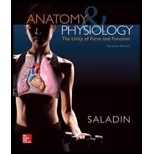
Concept explainers
Production of more than one
- a. pleiotrofy.
- b. genetic determinism.
- c. codominance.
- d. penetrance.
- e. genetic recombination
Introduction:
A single gene is responsible for the production of multiple phenotypes and this is termed as a pleiotropic effect. The gene influences multiple traits of organisms, which may transfer from one generation to another. In humans, phenylketonuria (PKU) is associated with pleiotropy. Phenylalanine hydroxylase converts phenylalanine to tyrosine; the mutation in phenylalanine hydroxylase encoding genes leads to multiple traits associated with phenylketonuria. It causes mental disorders, pigment defects, and eczema.
Answer to Problem 1TYR
Correct answer:
A single gene influences multiple or more than a phenotypic trait and is known as pleiotropy. Therefore, option a is correct.
Explanation of Solution
Justify reasons for the correct statement:
A single gene produces numerous phenotypic traits and is called as pleiotropy.
Option (a) is given as “pleiotropy”.
Multiple phenotypic characters produced by a gene is known as pleiotropy.
Hence, option (a) is correct.
Justify reasons for the incorrect statements:
Option (b) is given as “genetic determinism”.
Controlling of race, sex, and mental health by genes is known as genetic determinism. Hence, it is a wrong answer.
Option (c) is given as “codominance”.
Expression of both alleles of a gene in an organism is known as codominance. Hence, it is a wrong answer.
Option (d) is given as “penetrance”.
Exhibition of expected phenotype from the percentage of the given genotype is known as penetrance. Hence, it is a wrong answer.
Option (e) is given as “genetic recombination”.
Exchange of genetic material between two chromosomes or a different location of a single chromosome is known as genetic recombination. Hence, it is a wrong answer.
Hence, options (b), (c), (d), and (e) are incorrect.
A single gene produces numerous phenotypic traits and is called as pleiotropy.
Want to see more full solutions like this?
Chapter 4 Solutions
Anatomy & Physiology: The Unity of Form and Function (Standalone Book)
Additional Science Textbook Solutions
Chemistry: A Molecular Approach (4th Edition)
Microbiology Fundamentals: A Clinical Approach
Human Physiology: An Integrated Approach (8th Edition)
Campbell Essential Biology (7th Edition)
- Noggin mutation: The mouse, one of the phenotypic consequences of Noggin mutationis mispatterning of the spinal cord, in the posterior region of the mouse embryo, suchthat in the hindlimb region the more ventral fates are lost, and the dorsal Pax3 domain isexpanded. (this experiment is not in the lectures).a. Hypothesis for why: What would be your hypothesis for why the ventral fatesare lost and dorsal fates expanded? Include in your answer the words notochord,BMP, SHH and either (or both of) surface ectoderm or lateral plate mesodermarrow_forwardNot part of a graded assignment, from a past midtermarrow_forwardNot part of a graded assignment, from a past midtermarrow_forward
- please helparrow_forwardWhat does the heavy dark line along collecting duct tell us about water reabsorption in this individual at this time? What does the heavy dark line along collecting duct tell us about ADH secretion in this individual at this time?arrow_forwardBiology grade 10 study guidearrow_forward
 Human Heredity: Principles and Issues (MindTap Co...BiologyISBN:9781305251052Author:Michael CummingsPublisher:Cengage Learning
Human Heredity: Principles and Issues (MindTap Co...BiologyISBN:9781305251052Author:Michael CummingsPublisher:Cengage Learning Human Biology (MindTap Course List)BiologyISBN:9781305112100Author:Cecie Starr, Beverly McMillanPublisher:Cengage Learning
Human Biology (MindTap Course List)BiologyISBN:9781305112100Author:Cecie Starr, Beverly McMillanPublisher:Cengage Learning
 Biology: The Dynamic Science (MindTap Course List)BiologyISBN:9781305389892Author:Peter J. Russell, Paul E. Hertz, Beverly McMillanPublisher:Cengage Learning
Biology: The Dynamic Science (MindTap Course List)BiologyISBN:9781305389892Author:Peter J. Russell, Paul E. Hertz, Beverly McMillanPublisher:Cengage Learning Biology 2eBiologyISBN:9781947172517Author:Matthew Douglas, Jung Choi, Mary Ann ClarkPublisher:OpenStax
Biology 2eBiologyISBN:9781947172517Author:Matthew Douglas, Jung Choi, Mary Ann ClarkPublisher:OpenStax Biology (MindTap Course List)BiologyISBN:9781337392938Author:Eldra Solomon, Charles Martin, Diana W. Martin, Linda R. BergPublisher:Cengage Learning
Biology (MindTap Course List)BiologyISBN:9781337392938Author:Eldra Solomon, Charles Martin, Diana W. Martin, Linda R. BergPublisher:Cengage Learning





